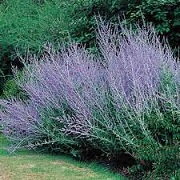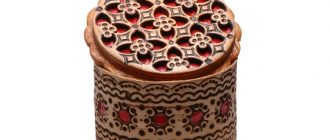Russian sage pruning involves a good observation of the plant’s growth pattern so that it can be pruned appropriately to rid off over-grown branches and retain its rich blooms. Read our guide for more facts& info on Russian Sage pruning…
Russian Sage is a beautiful ornamental plant with lavender blue or purple flowers and grayish-green leaves that give a silvery appearance to the foliage. The botanical name of the plant, which is a native of Central Asia, is Perovskia atriplicifolia. Adequate pruning of the Russian Sage plant contributes to a beautiful garden throughout the year.
Features of the Russian Sage plant
The Russian Sage is a perennial shrub, and aged stems could become woody near the crown. It shoots out vibrant lavender blue flowers that remain for several weeks, even through the fall months. Its silver-like grey-green foliage is mildly scented, and it forms spiky, vertical clusters, which stand erect. It may be 2-4 feet tall, but occasionally shoots up to 5 feet.
An amazing feature of the Russian Sage is that it thrives well in poor soil and low levels of water. Hence, this drought-resistant plant keeps the garden colorful and rich almost all through the year. Its eye-catching blooms are a delight during summer and fall, and in winter its twiggy appearance also gives an ornamental look.
Pruning Russian Sages
When the Russian Sage is left to itself, it could become leggy, while pruning will encourage a closely packed neat growth. Pruning is preferable at the start of spring, after new growth emerges. The stems should be pruned to about 12-18 inches height, and it is good to begin cutting from the outside stems and proceed to the center. Two or three stems may be cut at a time, while broken or dead stems should be eliminated using shears.
It is to be noted that the plant should not be pruned after the flowering period during fall. Flowers and foliage should be allowed to whither or die naturally so that it has enough protection during severe cold. Pruning should be such that growth of new shoots from the base is encouraged, and it should be minimal to keep its shape because too much pruning may hinder blooms in the growing season.
Tools used for pruning Russian Sage
Lightweight hand-pruners can be easily maneuvered and allow precise cutting of green stems as well as hard wood. Bypass pruners, with scissor-like blades, make smooth cuts and are helpful in maintaining the shape of the plant by thinning overgrown shrubs. Anvil pruners are preferred to cut thick wood stems which are relatively older.
The Russian Sage can be grown as a lovely hedge, and in combination with other colorful plants such as marigolds, they also form attractive pathway edges. They can be planted around the foot of tall trees such as myrtles to offer an ornamental appearance. Further, it attracts butterflies, adding to the charm of the garden.





